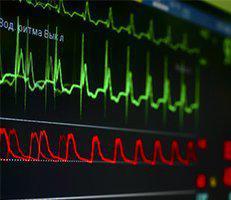Heart Monitoring
Heart Monitoring Q & A
by: Ameeta Walia, DO, FACC, FASE
What is Heart Monitoring?

Heart monitoring is the process of recording the electrical activity of the heart using Holter and event monitors. Heart monitoring is typically used to diagnose heart arrhythmias.
How Are Holter Monitors and Event Monitors Different From EKGs?
An EKG records the electrical activity of the heart and is often used to diagnose issues with the heart’s rhythm. An EKG only records for several seconds, so it’s not able to detect many heart problems. Holter and event monitors are able to measure the heartbeat for longer periods, so they have a higher chance of catching heartbeat irregularities than an EKG does.
Are Holter and Event Monitors the Same Thing?
While they are quite similar, they are not the same thing. Holter monitors will record the electrical activity of the heart for the entire time that they are worn. Event monitors only record the electrical activity of the heart at certain times, namely when the patient is having symptoms. Some event monitors must be started by the patient when they feel symptoms, and others self-start upon detection of irregular heart rhythm.
Who Needs a Holter or Event Monitor?
Holter or event monitors are often recommended for patients who are suspected to have a heart arrhythmia. Patients who regularly faint, have dizzy spells, or have palpitations will often need to wear a Holter or event monitor to determine whether an arrhythmia is causing the issues. These monitors are also sometimes used to check the progress of treatment for heartbeat irregularities.
How Are Holter and Event Monitors Worn?
Both Holter and event monitors are worn on the body. Because they are so lightweight, most people don’t find this to be an inconvenience. The monitor can typically be clipped to the belt or kept in the pants pocket. The monitors have wires that end in small sensors. These sensors are adhered to the chest with small sticky pads. When patients feel symptoms, they should stop what they’re doing to allow the machine to accurately record heart activity.





